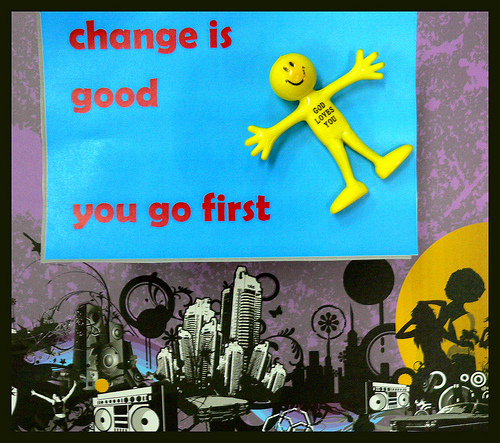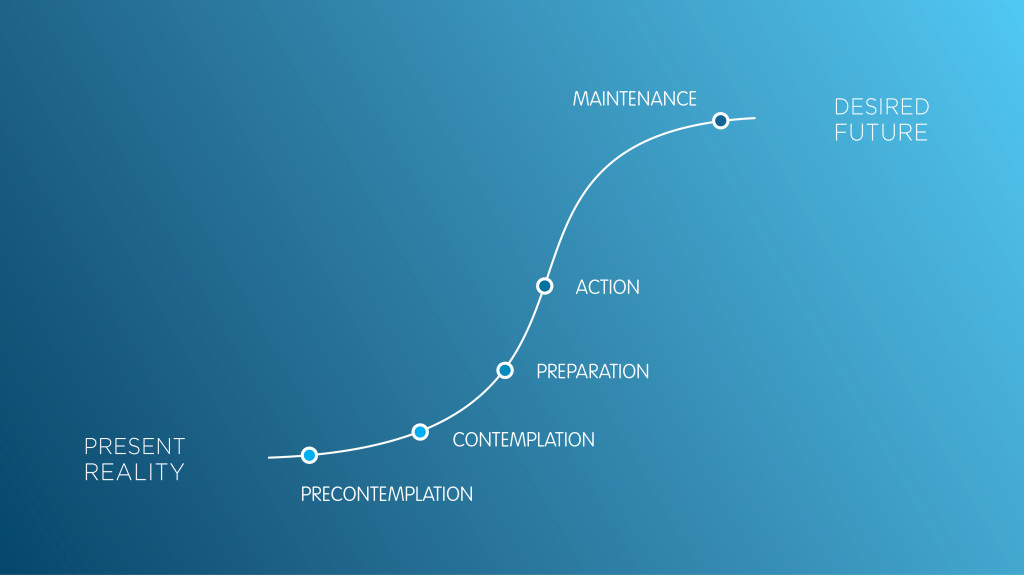Implementing effective change

Implementing effective change is difficult. Just imagine any of the following three scenarios;
i) As the boss you’ve decided that in order to save costs and promote growth you will close your current offices, move ten miles down the road to cheaper but larger offices. You call together your staff and inform them, being clear to sell the benefits. You expect them to be as excited as you.
ii) You are concerned with your company’s market perception so over a number of months meet with your management team and thrash out a new set of values. You send a staff wide communique stating that as a business we have new values and everyone is to act in these new ways. You can’t wait to see how the market will respond to your proactive actions.
iii) For the last three years your business has invested heavily in a new product line. You’ve been very upbeat, expecting this to be the game changer for your business. After a number of setbacks you decide to shut down the product line. Your expectation is that staff will breathe a sigh of relief as it was obvious the product wasn’t succeeding.
Decisions like this are communicated on a daily basis up and down the land. The impact? Rarely as the manager expects! Typically staff roll their eyes, become negative, resist your suggestions. Morale takes a dive and productivity and customer service is hit. This does not bode well for implementing effective change.
Implementing Effective Change
If only these managers understood the psychology of change. The process they themselves have travelled before coming to the decision. They would then communicate and engage with the change process in a far more successful way. Implementing effective change takes skill, knowledge and experience.
Here are the five steps that are so typical of implementing effective change, whether at a personal or organisational level;
- Precontemplation – the individual or company is unaware they have a problem. If they even see it they believe the issue lies elsewhere.
- Contemplation – On becoming aware they have a problem or issue, energy goes into working through the benefits of any potential action (change).
- Preparation – Once they’ve accepted the issue is theirs to resolve, energy is focussed on how to resolve.
- Action – a period of sustained activity addressing the issue in order to bring about successful change.
- Maintenance – managing expected relapses to ensure hard fought changes result in desired every-day behaviours.
In each of the three scenarios management have taken considerable time to move through the three phases of precontemplation, contemplation and preparation. The action phase demands they make public their plan – often to unsuspecting staff. The issue is that the staff are not permitted the time or resources to work through the same process. This is the reason so many change programmes fail. As such understanding these five stages is key to implementing effective change.
Conclusion to Implementing Effective Change
Understanding the tools and techniques involved at each of these stages of change creates the environment for implementing effective change. If you would like to understand more of what is involved at each stage of change, get in touch. We understand the psychology of change, people and organisations as well as the various interventions which will help reach desired goals. If you are looking to change, in the middle of change, or in fact staring defeat in the face get in touch.
Mark Bateman, contact@welcomeinsight.com, Twitter: @welcomeinsight.com, Phone: 01332 42 21 21 www.welcomeinsight.com
Further reading
This article is based on extensive research centred on the trans theoretical model (TTM). It has been demonstrated that working with individuals and organisations within the framework allows for implementing effective change.
References for implementing effective change and the TTM;
- Prochaska, J M. , Prochaska James O. & Levesque Deborah A. (2001) ‘A Transtheoretical Approach to Changing Organizations’. Administration and Policy in Mental Health and Mental Health Services Research Journal, Volume 28, Number 4 / March, 2001 (available here)
- Passmore J O (2010) Integrative coaching in Excellence in Coaching, The Industry Guide. (Edited by Passmore). Kogan Page, 2nd Ed. Ch11.
- Prochaska J.O. & Norcross J.C. (2003), Systems of Psychotherapy – A Transtheoretical Analysis, Fifth Edition Thompson Brooks/Cole, New York.
(c) Welcome Insight. Article written by Mark Bateman. Change is good image by Len Matthews. June 2013.



